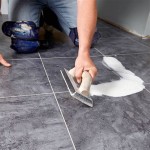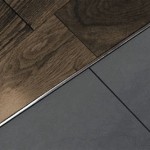How Much Does Tile Floor Cost To Install?
Installing tile flooring is a popular home improvement project, favored for its durability, aesthetic appeal, and wide range of design options. However, understanding the costs involved is crucial for budgeting and planning purposes. The overall cost of tile floor installation is influenced by several factors, encompassing material expenses, labor charges, and preparation requirements. This article examines these factors in detail to provide a comprehensive overview of tile floor installation costs.
Estimating the cost of tile floor installation accurately requires considering various components. The type of tile selected significantly impacts the overall price. Ceramic and porcelain tiles are generally more affordable than natural stone options like marble or granite. Furthermore, the size and complexity of the installation area will affect both material requirements and labor time. The condition of the subfloor is also a critical factor, as necessary repairs or leveling can add substantially to the total expense. Geographic location also plays a role, as labor rates and material costs can vary significantly from region to region. Finally, any specific design requests, such as intricate patterns or custom layouts, will likely increase the labor costs.
Key Cost Factors: Materials
Materials represent a significant portion of the overall tile floor installation cost. These expenses encompass the tiles themselves, as well as essential supplies like mortar, grout, underlayment, and sealants. The type of tile chosen is the primary driver of material cost. Ceramic tiles are typically the most budget-friendly option, often ranging from $1 to $5 per square foot. Porcelain tiles, known for their durability and water resistance, generally cost between $3 and $10 per square foot. Natural stone tiles, such as marble, granite, slate, and travertine, are the most expensive, with prices ranging from $5 to $50 or more per square foot, depending on the specific stone and its quality.
Beyond the tiles themselves, other materials contribute to the total cost. Mortar, which adheres the tiles to the subfloor, typically costs between $15 and $50 per bag, depending on the type and quality. Grout, used to fill the spaces between the tiles, ranges from $10 to $40 per bag. The choice of grout depends on the type of tile and the desired aesthetic. Underlayment, which provides a stable and even surface for the tiles, can cost from $0.50 to $5 per square foot, depending on the material and its purpose (e.g., soundproofing, moisture barrier). Sealants, applied to protect the grout and some types of tile from staining and water damage, typically cost $10 to $30 per bottle.
The quantity of materials required will depend on the size of the installation area and the specific layout. Accurate measurements and careful planning are crucial to minimize waste and avoid unnecessary expenses. It is generally recommended to purchase approximately 10% extra material to account for cuts, breakage, and potential future repairs.
Key Cost Factors: Labor
Labor costs constitute a substantial portion of the overall tile floor installation expense. Hiring a professional installer ensures that the job is done correctly and efficiently, minimizing the risk of future problems. Labor rates vary depending on geographic location, the installer's experience, and the complexity of the installation. Generally, labor costs range from $4 to $14 per square foot, although this can vary depending on the project specifics.
The complexity of the installation significantly impacts labor costs. Simple, straightforward installations in square or rectangular rooms will typically have lower labor rates than installations with intricate patterns, custom cuts, or difficult layouts. Diagonal or herringbone patterns, for example, require more time and skill to install, and therefore command higher labor charges. Similarly, installations in irregularly shaped rooms or with numerous corners and obstacles will also increase labor costs.
The condition of the subfloor is another factor that can influence labor costs. If the subfloor is uneven, damaged, or requires significant preparation, the installer may charge an additional fee to level or repair it. This can involve patching cracks, filling holes, or even installing a new subfloor. Preparing the subfloor properly is essential for ensuring the longevity and stability of the tile floor.
Obtaining multiple quotes from different installers is essential for comparing prices and finding the best value. When requesting quotes, it is important to provide detailed information about the scope of the project, including the size and shape of the room, the type of tile being used, and any specific design requests. It is also advisable to check the installer's credentials, experience, and references before making a decision.
Key Cost Factors: Subfloor Preparation and Additional Expenses
Preparing the subfloor is a critical step in tile floor installation, and its cost can vary greatly depending on the existing condition. A properly prepared subfloor provides a stable, level, and clean surface for the tiles, ensuring a long-lasting and aesthetically pleasing result. Neglecting subfloor preparation can lead to cracked tiles, uneven surfaces, and other problems that can be costly to repair.
If the existing subfloor is concrete, it should be thoroughly cleaned and inspected for cracks or imperfections. Minor cracks can often be patched with a concrete repair compound, while larger cracks may require more extensive repairs. If the concrete is uneven, it may need to be leveled with a self-leveling compound. Self-leveling compounds can add significantly to the cost, ranging from $2 to $6 per square foot, depending on the thickness required.
If the existing subfloor is wood, it should be checked for structural integrity and moisture damage. Any damaged or weakened areas should be repaired or replaced before proceeding with the tile installation. A plywood or cement board underlayment is typically installed over the wood subfloor to provide a stable and water-resistant surface for the tiles. Cement board typically costs between $0.50 and $2 per square foot.
Additional expenses can also contribute to the overall cost of tile floor installation. These expenses may include the removal and disposal of existing flooring, the cost of moving furniture, and the cost of purchasing specialized tools or equipment. Removing existing flooring can range from $1 to $5 per square foot, depending on the type of flooring and the complexity of the removal process. Moving furniture may require hiring professional movers, which can add several hundred dollars to the total cost. Specialized tools, such as tile saws and grout floats, may need to be purchased or rented, depending on whether the installation is being done DIY or by a professional.
In addition to the tangible costs, it's important to factor in the potential for unforeseen expenses. Unexpected problems, such as hidden damage to the subfloor or plumbing issues, can arise during the installation process. Setting aside a contingency fund of 5% to 10% of the total budget can help to cover these unexpected costs.
Furthermore, consider any potential building permits that may be required for the tile floor installation. Regulations vary depending on the location and the scope of the project. Failure to obtain necessary permits can result in fines or delays.
In summary, the cost of tile floor installation involves a range of factors, including the type of tile, the size and complexity of the installation area, the condition of the subfloor, and the labor costs. By carefully considering these factors and obtaining multiple quotes from qualified installers, it is possible to accurately estimate the cost of the project and make informed decisions about budgeting and planning.
Ultimately, investing in high-quality materials and professional installation can provide long-term value by ensuring a durable, aesthetically pleasing, and problem-free tile floor. A well-installed tile floor can enhance the beauty and functionality of a home for many years to come.

Tile Flooring Installation Cost Floor S Fixr

Ceramic Tile Flooring Installation Cost Fixr

Ceramic Tile Flooring Installation Cost Fixr

Tile Flooring Installation Cost Floor S Fixr

What Is The Average Cost To Install Tile Floors Rubi Blog Usa

Ceramic Tile Flooring Installation Cost Fixr

How Much Does Tile Installation Cost 2025 Guide

How Much Does Tile Installation Cost 2025 Guide

Ceramic Tile Flooring Installation Cost Fixr

Floor Replacement Cost To Refloor A House Fixr
See Also







